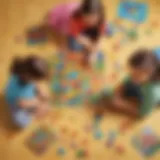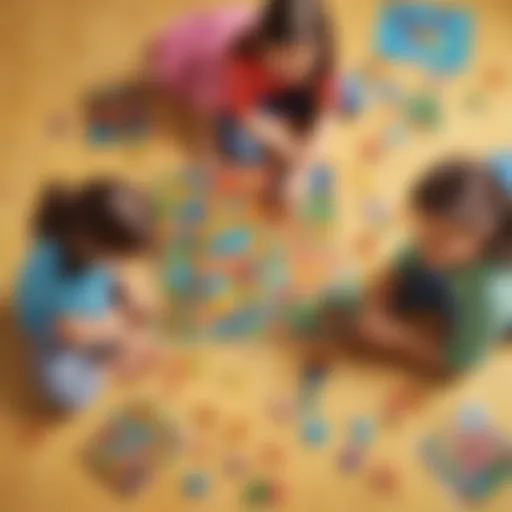Mastering the Art of Adding Three Numbers


Intro
Adding numbers is a basic skill that plays a crucial role in our daily lives. Whether you’re calculating expenses, cooking, or just counting your steps, understanding how to add is essential. In this guide, we’ll focus specifically on the art of adding three numbers. While the concept may seem simple at first glance, the methods and strategies behind it can enhance not only computational skills but also cognitive development in children. This introduction sets the stage for a deeper dive into creative activities, quizzes, and real-world applications that showcase the beauty of addition.
Creative Activities
Engaging children in creative activities can significantly improve their understanding of numbers and addition. Hands-on experiences make learning more enjoyable and effective. Here are some creative ideas designed to make the process of adding three numbers interactive and fun:
Craft Ideas:
Children can create colorful number cards. Each card can represent a number from 1 to 10. Once they have their cards, they can easily manipulate them to add three numbers together. After they practice, they can even decorate the cards to make them visually appealing. This extra step helps reinforce their understanding through art.
Step-by-Step Guides:
- Number Card Creation:
- Using the Cards:
- Gather materials: colored paper, markers, scissors, and glue.
- Cut the paper into cards: roughly the size of playing cards.
- Write a single number on each card, ensuring clarity in the text.
- Decorate the cards with drawings or stickers representing the numbers.
- Shuffle the cards and pick any three.
- In front of them, ask them to arrange the cards in a row.
- Help them add the numbers by counting each card one by one. Encourage them to express the total by stating the sum out loud.
Educational Value:
Implementing these activities can lead kids to understand how adding works beyond abstract concepts. It instills a sense of achievement when they see their results and encourages them to practice more. Seeing physical representations of numbers can strengthen their numerical literacy significantly.
Fun Quizzes
Once children have a grasp of the basic addition of three numbers, quizzes can be an excellent way to reinforce their learning. The quizzes can cover various topics related to addition, while ensuring engagement.
Quiz Topics:
- Basic addition facts involving three numbers.
- Word problems that incorporate addition.
- Patterns and sequences in addition.
Question Types:
- Multiple-choice questions to test their knowledge.
- Fill-in-the-blank questions for addition sums.
- Story problems where they must derive the right answer through context clues.
Knowledge Reinforcement:
These quizzes serve as a fun way to confirm their knowledge and reinforce what they've learned. With every question answered correctly, children gain confidence in their skills and a sense of progression.
Fact-Based Articles
Many resources exist that can further solidify children’s understanding of addition. Reading articles that break down the concepts in an approachable manner allows them to absorb knowledge at their own pace.
Topics:
- History of numbers and how they originated.
- Real-life applications of addition in different fields such as cooking or budgeting.
- Fun facts about numbers and their patterns.
Engaging Content:
Well-written articles successfully hold attention by using relatable examples. They make complex ideas simple and digestible—perfect for a young audience.
Understanding Addition
Addition serves as the gateway to mathematics—a fundamental operation that young learners encounter early in their education. By grasping the concept of addition, children develop not just the ability to calculate, but also critical thinking and problem-solving skills. Addition is everywhere; from counting apples to tallying scores in games, understanding how to correctly add three numbers can influence a child's confidence and success in math.
When children understand addition, they also unlock the door to more complex operations, such as subtraction, multiplication, and even division. This foundational skill significantly aids in building numerical literacy, allowing them to engage with math more comfortable and intuitively. Moreover, recognizing how addition functions in everyday life makes the subject more relatable and less daunting.
"Math is not about numbers; it’s about understanding patterns and relationships."
The Concept of Addition
At its core, addition is about combining quantities. The act of putting together, signified by the plus sign (+), is an intuitive process that most children grasp quickly. For instance, when a child has two toy cars and someone gives them one more, they can visualize the total, often without needing to rely on their fingers. This simple act illustrates a basic principle of addition: when you combine, you increase.
Let's consider a practical situation. Imagine a young student has a box of crayons. If they have three red crayons and four blue crayons, the act of adding these quantities together signifies that they have more total crayons: 3 + 4 = 7. Addition, however, isn't merely about numbers—it helps students understand concepts of quantity, representation, and even comparison in a broader sense.
Why Addition Matters
Addition lays the groundwork for mathematical reasoning and is pivotal to cognitive development in children. Here’s why addition matters:
- Everyday Life Applications: From planning budgets for a school project to calculating scores in sports, addition plays a significant role.
- Foundation for Higher Math: Understanding addition with multiple numbers prepares students for algebraic concepts in later grades.
- Enhanced Problem-Solving Skills: Learning how to add numbers effectively helps in sharpening overall analytical skills.
- Building Confidence: Success in mastering addition boosts self-esteem in students, encouraging them to tackle more challenging mathematical concepts.
Encouraging children to practice addition regularly can lead to a more profound understanding of math. By nurturing their skills in adding three numbers, we cultivate lifelong learners who view math as a helpful tool rather than a hurdle.
Breaking Down the Process of Adding Three Numbers
When we dive into the world of addition, especially adding three numbers, it's not just a simple task; it’s a vital skill that lays the groundwork for more complex mathematical concepts. Getting the hang of this process helps young learners develop their confidence in math, which tends to echo through various aspects of life, from academics to real-world problem-solving.
Understanding how to break down this process allows students to navigate additions with more ease and accuracy. In this section, we’ll explore the intricate steps and methods involved in adding three numbers, as well as how organizing these numbers can lead to a smoother experience.
Step-by-Step Addition
Let’s start with a straightforward approach to adding three numbers. This can be as simple as pie if you break it down into digestible steps. Here’s how you can walk through the process:


- Pick Your Numbers: Take your three numbers. For example, let’s use 4, 3, and 5.
- Start with the First Two: Add the first two numbers together. Here, it would be 4 + 3, which equals 7.
- Add the Result to the Third Number: Now take this sum (7) and add it to the third number (5). So, 7 + 5 equals 12.
In just three steps, the addition is complete! This systematic approach can help students feel less overwhelmed by an initial trio of numbers and make the process feel more manageable.
Tip: Always encourage young learners to double-check their work to build accuracy.
Arranging the Numbers
Another crucial aspect of adding three numbers effectively involves how you arrange them. While some may think the order doesn't matter, the way you line up numbers can significantly affect ease and clarity, especially with larger digits. Here are some tips for arranging numbers:
- Identify Friendly Numbers: Group numbers that are closer together or that make ten. For instance, if you have numbers like 8, 2, and 5, you might rearrange them to see if 8 and 2 can be added first, making it simpler.
- Consider Size: Some learners find adding smaller numbers first can help. If you have 1, 3, and 10, starting with 1 and 3 can quickly create a manageable sum of 4, which can then be added to 10 easily.
- Visual Aids: Sometimes, writing down numbers clearly can prevent confusion. Encourage students to write them down in a vertical format, one above the other, to see the addition process more visually.
These techniques not only help in attaining the correct answer but also foster a sense of methodical thinking and organization crucial for tackling challenges in mathematics.
Utilizing Visual Aids
Visual aids play a crucial role in helping both children and adults grasp mathematical concepts, especially when it comes to adding numbers. By using tools like number lines or manipulatives, learners can transform abstract numbers into tangible experiences. This method not only enhances understanding but also boosts confidence in dealing with mathematics. Visual aids cater to various learning styles, making it a universal approach to teaching addition.
Using Number Lines
Number lines serve as an excellent visual aid for teaching addition, particularly when adding three numbers. They provide a straight path where numbers can be easily located and combined. Visualizing numbers on a line helps in comprehending the relationship between them, allowing learners to clearly see the process of addition.
To utilize a number line effectively:
- Draw a horizontal line and mark equal intervals for numbers.
- Label key points accurately, such as 0, 1, 2, and so forth.
- For adding numbers, such as 3, 4, and 5, learners can start at 0 and count forward to add each number sequentially.
- This approach emphasizes concrete understanding, where kids can literally jump forward on the number line.
One key advantage of using a number line is that it illustrates the concept of counting up. As children practice this method, they start to internalize addition as a movement across a spectrum, which increases their number sense.
"Using a number line simplifies math and makes it visual, which can resonate with young learners for strong comprehension!"
Employing Manipulatives
Manipulatives are physical objects that children can handle to better understand mathematical concepts. They range from simple items like blocks, beads, or even counters. When it comes to adding numbers, manipulatives allow kids to physically enact the addition process, reinforcing conceptual understanding through tactile experience.
Here’s how to effectively use manipulatives for adding three numbers:
- Gather Objects: Use colorful counting blocks or any available items that can be grouped easily.
- Set Up: If we want to add 2, 3, and 4, gather 2 blocks, 3 blocks, and 4 blocks separately.
- Combine: Ask the child to physically combine all the blocks together and count them out loud. This tactile action helps solidify the concept of addition as merging groups of items.
- Visualize Total: After counting the combined total, children can place the total number of blocks in one pile. This makes the addition of three numbers a visually satisfying and engaging exercise.
Using manipulatives not just engages senses, but also supports kinesthetic learners who learn best through action. Moreover, they foster deeper understanding as kids can experiment with and explore various arithmetic concepts with ease.
Together, utilizing visual aids like number lines and manipulatives paves a clear path for children to develop basic addition skills, preparing them for more complex mathematical challenges down the road.
Practicing Mental Addition
Practicing mental addition is an essential skill that can significantly enhance mathematical abilities in children. This method encourages students to perform addition without relying on paper, calculators, or other external tools. Cultivating mental math skills not only aids in quick calculations but also helps to build confidence while developing a stronger numerical sense. Through regular practice, students become adept at manipulating numbers in their heads, which is crucial for academic success and everyday decision making.
Engaging in mental addition has several benefits:
- Improved Speed and Accuracy: The more students practice, the faster and more accurately they can make calculations. This skill can be beneficial in timed tests or quick problem-solving scenarios.
- Enhanced Problem-Solving Skills: Mental math often requires children to break numbers apart and think critically about combinations, strengthening their analytical thinking.
- Increased Engagement: Exercises that boost mental addition can be fun and interactive, enhancing children’s enthusiasm towards learning.
Moreover, engaging with mental addition exercises fosters a positive attitude towards mathematics. If a child feels comfortable with basic calculations in their head, they are more likely to tackle more complex mathematical concepts with poise.
Techniques for Mental Math
When it comes to techniques for mental math, various methods can be employed to make addition easier and more intuitive for kids. Here are a few practical strategies:
- Breaking Numbers Down (Decomposition): Students can break numbers into smaller parts. For example, to add 27 and 35, they can think of it as 20 + 30 and 7 + 5. This way, they can add 50 and 12 separately, leading to a total of 62.
- Using Rounding: Another approach is rounding numbers to the nearest ten. For instance, when adding 48 and 25, students can round 48 to 50. After calculating 50 + 25 = 75, they simply subtract the 2 they added earlier to get 73.
- Creating Friendly Numbers: Encouraging children to manipulate numbers that are easy to work with can make addition less daunting. If they’re adding 18 + 9, they may find it easier to think of it as 20 - 2, leading to the same solution of 27.
Games to Enhance Mental Addition
Integrating games into learning can significantly boost a child's motivation to practice mental addition. Here are some entertaining ideas that can make addition feel less like a chore:
- Flashcard Races: Use flashcards with different addition problems. The child can race against the clock to answer as many as possible in a minute.
- Number Bingo: Create a bingo card with sums or just numbers. Instead of calling out numbers, call out addition prompts like "7 + 3." Players must calculate and mark their cards.
- Math Board Games: Games like "Sum Swamp" or "Monopoly" can promote addition practice. Moving around the board involves calculations that require mental addition in the process.
Engaging games not only develop skills but also provide valuable social interactions. Through friendly competition, kids can motivate each other and learn collaboratively.
Practicing mental addition this way turns learning from a chore into a joyful activity.
The goal is to make these techniques resonate with children so they can grasp the concepts effectively while they enhance their confidence in handling numbers.
Strategies for Simplifying the Process
When it comes to adding three numbers, having simplified strategies is like having a compass in uncharted waters. It's not just about getting the numbers right; it’s about streamlining the process to minimize mistakes and boost confidence. In this article, we’ll explore two main strategies: grouping numbers and rearranging for simplicity. Both methods not only make calculations easier but also help young learners develop a deeper understanding of addition.
Grouping Numbers
Grouping numbers is akin to putting like items in a basket. By arranging numbers into smaller, manageable groups, the process of addition becomes less daunting. For instance, consider the numbers 8, 5, and 3. The collective sum is 16. However, if you group 8 and 5 together first, you’ve arrived at 13, then simply add the 3: 13 + 3 = 16.
This technique is particularly beneficial when dealing with larger numbers or when the individual addends are cumbersome. It allows students to break down complex problems into simpler chunks. This not only facilitates quicker calculations but also minimizes the chances of errors. When children learn to identify pairs of numbers that make ten or another round number, they've unlocked a powerful mathematical skill.
Key Benefits of Grouping Numbers:
- Reduces complexity in calculations
- Enhances number sense
- Encourages critical thinking
- Empowers students to visualize relationships between numbers
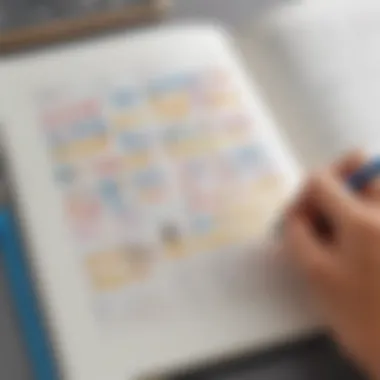
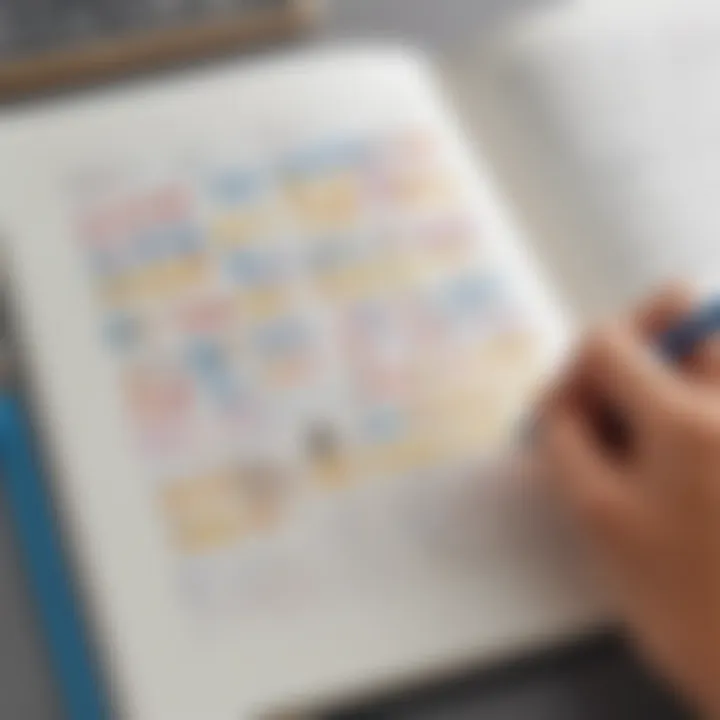
Consider this practical example: When adding 7 + 9 + 4, one could group 7 and 4 to make 11, leading to a more straightforward equation: 11 + 9 results in 20. This skill can be likened to organizing a messy room; when everything is in its place, clarity follows.
Rearranging for Simplicity
Rearranging the order in which numbers are added can also provide a clearer path to the solution. According to the Commutative Property of Addition, changing the order of the addends does not affect the sum. This flexibility allows students to find an arrangement that feels most intuitive.
Take the numbers 4, 7, and 2. Adding them in the original order—4 + 7 + 2—might feel tricky to some. However, if we switch it around to 7 + 2 + 4, students might find it easier to add the 9 and then bring in the final number, resulting in 13.
By encouraging learners to test different arrangements, it promotes exploration. They’ll discover that there’s often more than one way to reach the answer, fostering a sense of empowerment and ownership over their learning.
Things to Consider When Rearranging:
- Identify which numbers are easier to add or combine
- Use mental math strategies that feel comfortable
- Encourage experimentation with different number combinations
Remember, math is as much about the journey as it is about the destination. When kids grasp the idea that there's more than one route to take in numbers, they become more curious and engaged.
Common Mistakes in Addition
Understanding the common mistakes in addition isn't just an exercise in futility; it is a vital component in mastering arithmetic. Elementary school children often stumble upon similar pitfalls when adding three numbers, and recognizing these errors can pave the way to improvement. When students encounter challenges, it can foster confusion, leading them to distrust their abilities. But identifying these mistakes acts as a guidepost for educators, parents, and students alike.
One crucial aspect of addressing mistakes is that it sheds light on the thought process behind addition. Missteps around simple addition can unravel deeper misunderstandings in foundational math skills. By bringing these errors into the light, learners can tackle math with greater confidence.
Identifying Errors
Errors in addition often spring from a lack of attention or misunderstanding of number placement. Children might misalign digits when stacking numbers vertically, causing miscalculations. Let’s ponder upon a few common types of errors:
- Misalignment: When numbers aren't lined up properly (like 342 + 256), it could lead to adding tens with hundreds, yielding inaccurate results.
- Rushing: Pressing the gas too much when adding results in missed digits; children often forget to add that sneaky number hiding behind the tens column.
- Carrying Errors: Forgetting to carry over a number after reaching ten is a big blunder. This mistake can alter the problem entirely.
Remember the old adage—"measure twice, cut once." The same notion bears relevance here. Taking a moment to confirm each step can drastically reduce mistakes.
Correcting Misconceptions
To combat the fallout from these blunders, it’s essential to correct misconceptions. Just because a child may make a mistake doesn't mean they lack potential in math. Instead, it's about fostering understanding and sharpening skills. Here are ways to correct those fallacies:
- Review Together: Sit down with a student after an error has been made. This can help decode where the thinking falters. Ask simple questions like, "What do you think went wrong here?" This encourages self-reflection.
- Practice: Building proficiency often means practice. Utilize worksheets or interactive tools such as educational websites that allow students to work through problems at their own pace.
- Use Manipulatives: Physical objects, like blocks or counters, can provide a tactile method of adding numbers. Through hands-on activities, children can better understand the concept of carrying over and aligning digits.
"Mistakes are proof that you are trying."
- Encourage Persistence: Sometimes students might feel discouraged due to their mistakes, but reinforcing that errors are a natural part of learning math improves their attitude and encourages them to tackle challenges collaboratively.
In summary, recognizing and addressing common mistakes in addition can significantly enhance a student’s mathematical journey. This attention to detail supports their growth and overall mastery in math, leading to increased confidence and competence in future mathematical endeavors.
Using Real-life Applications of Addition
Understanding how to add three numbers goes beyond the classroom. It seeps into our daily lives and activities, making it crucial for children and adults alike to grasp its importance. This section focuses on the practical applications of addition, showcasing how vital this skill is in real-world scenarios. When young learners recognize the relevance of addition, they are likely to approach mathematics with a sense of curiosity and confidence.
Specific Benefits of Real-life Applications
Real-life applications of addition enhance learning by making abstract concepts tangible. Here are some key points to consider:
- Relatability: Children can relate more to problems rooted in their everyday experiences, which makes it easier to learn.
- Problem Solving: Encountering addition in various contexts teaches critical thinking and develops problem-solving skills.
- Confidence Building: Successfully applying addition to real-life situations boosts self-esteem and encourages further exploration of math.
- Interconnectivity of Skills: Addition is fundamental to many processes, and understanding it can help in mastering more complex math topics.
By exploring real-life scenarios where addition is necessary, educators and parents can create engaging and meaningful learning experiences.
Shopping Scenarios
Shopping situations present a perfect opportunity to practice addition. Consider the scenario of a child helping a parent figure out the total cost of items in their cart.
For example, imagine they are buying:
- Apples for $2.50
- Bananas for $1.75
- Oranges for $3.00
To find the total cost, they will perform the addition like this:
- Add the first two items:
$2.50 (apples) + $1.75 (bananas) = $4.25 - Then add the third item:
$4.25 + $3.00 (oranges) = $7.25
This method helps develop budgeting skills early on. Learning to add prices can assist children in understanding financial responsibility.
Moreover, setting a budget and choosing items can turn basic addition into a fun game. Children learn to prioritize their choices and see how addition impacts their spending decisions.
Cooking and Measurements
Another common application of addition sits right in the heart of the kitchen when cooking and baking. Measuring ingredients often requires addition, especially when a recipe calls for multiple items.
Suppose a recipe needs:
- 1 cup of flour
- 1/2 cup of sugar
- 1/4 cup of butter
The total amount of dry and liquid ingredients needed can be easily calculated like this:
- Combine the flour and sugar first:
1 cup + 0.5 cup = 1.5 cups - Then add the butter:
1.5 cups + 0.25 cup = 1.75 cups
In making a dish, children not only learn addition skills but also become aware of measurements, proportions, and how they affect the final product. Cooking together can significantly enhance a child's relationship with math in a practical way.
Moreover, as they combine ingredients, you can ask them to predict how much of each item they’ll need if they want to serve more people. This encourages critical thinking while allowing them to practice addition in a fun environment.
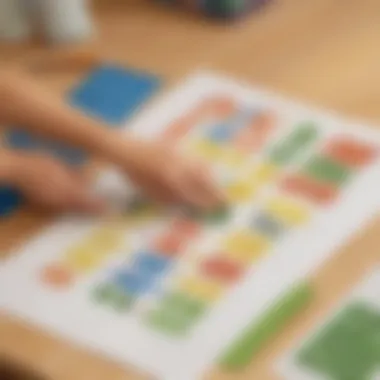
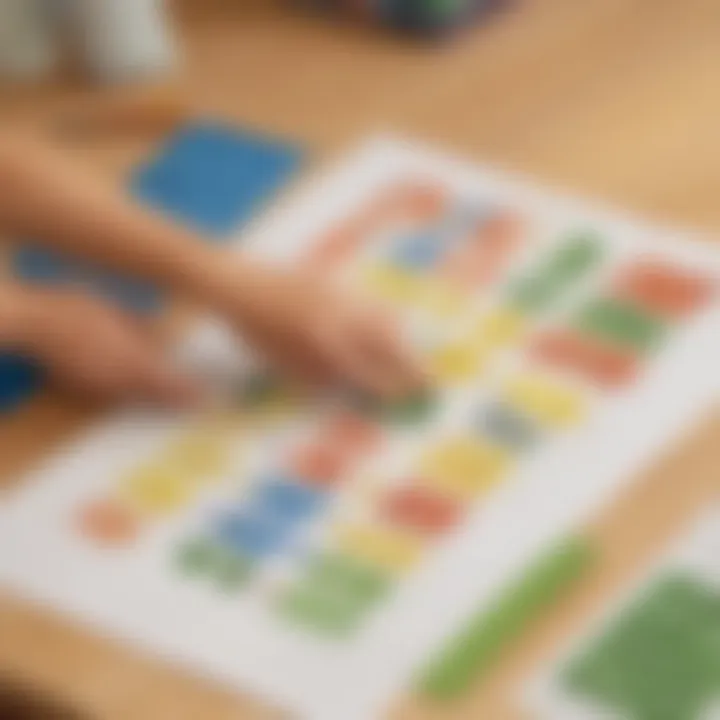
Exploring Advanced Techniques
When it comes to mastering addition, especially adding three numbers, delving into advanced techniques can serve as a game-changer. Understanding these methods not only enhances one’s computational skills but also lays a stronger foundation for more complex mathematical concepts. In this section, we will explore two fundamental advanced techniques: algebraic addition and combining negative and positive numbers. Each plays a significant role in refining one’s addition ability and broadening the understanding of numerical relationships.
Intro to Algebraic Addition
Algebraic addition may sound intimidating, but it essentially involves using algebraic expressions to simplify the process of adding numbers. This approach is crucial because it encourages students to recognize patterns and relationships among numbers, which builds a deeper understanding of arithmetic.
By integrating letters with numbers, students learn to represent values in a more abstract form. For example:
- If we denote the three numbers as A, B, and C, the addition can be expressed as A + B + C.
- This method helps learners see that addition does not just involve values, but also the relationships between them.
Here's why students should embrace algebraic addition:
- Enhances Problem-Solving Skills: Using symbols allows students to manipulate the equations and explore different ways to reach a solution.
- Prepares for Advanced Studies: Understanding algebra sets the groundwork for future mathematical expressions that involve variables, making higher-level math less daunting.
Students should practice problems like:
- Simplifying the expression A + B + C where A, B, and C have specific values.
- Creating their own equations to solve with unknowns.
Combining Negative and Positive Numbers
Mixing negative and positive numbers is crucial in everyday math applications. For instance, when balancing accounts or measuring temperature, understanding how these two types of numbers interact is fundamental.
Here’s a simple example to illustrate this:
- Take the numbers 5 (positive), -3 (negative), and 2 (positive). The equation would look like 5 + (-3) + 2.
- First, combine the positive numbers: 5 + 2 = 7.
- Next, add the negative: 7 + (-3) = 4.
Things to remember:
- When adding a positive number and a negative number, you are essentially subtracting, depending on which number is larger.
- Keep in mind that the more negative numbers you add, the smaller your total will become.
Here are some strategies to guide students when working with positive and negative numbers:
- Visualize with a Number Line: Using a number line can help in understanding how far positive numbers extend in one direction, while negative numbers extend in the opposite. This way, learners can visually grasp the concept of addition and its effect on magnitude.
- Group Like Numbers: Encourage students to group positive and negative numbers separately before combining them to streamline the process.
"Understanding how to effectively add numbers, whether they are positive or negative, helps in building a solid mathematical foundation for students."
Assessment and Progress Tracking
Assessment and progress tracking play a crucial role in the journey of mastering addition, especially when it comes to adding three numbers. Without a way to measure understanding, it’s like trying to hit a target in the dark. You need to know where you're aiming and what progress you're making. This ensures that learners, whether they are children, parents, or educators, can recognize strengths and identify areas needing improvement.
When students practice adding three numbers, assessments can help highlight their grasp of the concepts at hand. For instance, simple quizzes or hands-on activities give instant feedback. They help children feel more confident about their skills and provide a sense of achievement as they track their progress over time.
Benefits of Assessment:
- Immediate Feedback: Quick assessments allow learners to see where they stand, making adjustments easier.
- Identifying Gaps: They help pinpoint misunderstandings or specific areas that need more attention.
- Encouragement: Monitoring progress can motivate students to set goals and strive for improvement.
- Customization: With insights gained from assessments, one can tailor educational approaches to suit each learner’s needs more effectively.
Quizzes and Exercises
Quizzes and exercises are integral to assessing how well students can add three numbers. They come in various flavors, from multiple-choice questions to fill-in-the-blank assignments. No two quizzes need to look the same. Variety keeps learning fresh and engaging, keeping kids on their toes.
Some strategies for creating effective quizzes and exercises include:
- Real-World Problems: Situate questions in everyday contexts, like adding prices of items in a store or measuring ingredients for a recipe.
- Progressive Difficulty: Start with simple problems and gradually increase the complexity. This allows learners to build on their existing knowledge without feeling overwhelmed.
- Pair Work: Encourage students to work together. It helps them learn from others and clarify doubts.
It's not just about filling in the right answers; the key is understanding the 'why' behind the mathematics. The more interactive and varied the quizzes are, the better students will connect with the content, making learning feel less like a chore and more like an adventure.
Monitoring Improvement
Monitoring improvement goes hand-in-hand with assessments. It’s not enough to know where students stand on a particular day; tracking progress over time lays out a clearer picture of their mathematical journey. Keeping a record of performance helps both educators and learners visualize growth.
Here are a few methods to effectively monitor improvement:
- Progress Charts: Create visual aids, like charts that show scores over time. Seeing how far they’ve come can be a real confidence booster.
- Reflection Journals: Encourage students to write about their feelings towards math after each quiz. Are they happy? Frustrated? This helps build emotional awareness.
- Parent Involvement: Engaging parents in the process can enhance accountability. Sharing progress in regular conversations allows them to support their child's learning journey.
In the end, effective monitoring isn’t just about numbers. It’s about understanding students’ growth and excitement in learning addition. Celebrating small victories along the way makes the process enjoyable and fosters a love for math that can last a lifetime.
Developing a Positive Attitude Towards Math
Having a positive attitude towards math is more than just a feel-good factor; it plays a crucial role in a child's learning journey. In the context of adding three numbers, fostering a supportive mindset can lead to better understanding and retention of mathematical concepts. Approaching math with enthusiasm and openness allows children to navigate challenges more effectively, transforming these challenges into exciting learning opportunities.
When children see math as something they can enjoy, they are likely to engage more actively in the process. This engagement can manifest in various ways, such as asking questions, exploring different techniques, and practicing regularly. In this article, we will discuss specific elements and benefits of developing a positive attitude toward math, ensuring that the process of understanding addition becomes a joy rather than a chore.
Encouraging Curiosity
Curiosity is like fuel for learning. When kids are curious about math, they might start asking questions like, "Why do we add these numbers this way?" or "What happens if we change one number?" Encouraging this kind of questioning digs deeper into understanding.
To spark curiosity in the topic, try these ideas:
- Math Games: Playing fun games that incorporate addition can stimulate interest. For example, using card games where players must add up their cards can turn math into a social, engaging activity.
- Real-life Situations: Show them how addition is used in everyday life—like when baking or shopping. Asking questions like, "If we buy two apples and three bananas, how many fruits do we have?" keeps the math relevant.
- Exploration: Encourage them to explore different ways to add. Whether they're using fingers, blocks, or drawings, the exploration process not only builds skill but also sustains interest.
"Curiosity about math can unlock the door to a world of understanding and appreciation!"
Motivational Strategies for Young Learners
To truly motivate young learners in math, it helps to implement strategies that resonate with their interests and experiences. Plainly put, if a child enjoys something, they'll likely do it more often. Here are a couple of effective strategies:
- Celebrate Effort, Not Just Results: Reinforce the importance of trying. Praising a child for attempting a difficult addition problem, even if they don’t get the right answer, helps them value persistence over perfection.
- Integrate Storytelling: Math problems can be framed in stories that captivate a child's imagination. For instance, creating a scenario where a character needs to gather friends together for a party and must figure out how many guests can come from different groups can make addition more engaging.
- Personalize Learning: Use the child’s interests to create personalized math problems. If they love dinosaur facts or are fans of a superhero, frame the addition problems around those interests.
By fostering curiosity and employing motivational strategies, we prepare young learners not just to understand addition, but to embrace math as a vital and enjoyable part of their lives. This positive approach can lay a solid foundation for their future academic endeavours.
